- Home
- Orhan Pamuk
Other Colors Page 30
Other Colors Read online
Page 30
This is not a book about how I see a horse, it’s about how miniaturists saw them. And my horse is not talking about real horses, but about how miniaturists depict them. When I see a horse with my own eyes, I’ll immediately compare it to a picture of a horse, and there it will end.
I composed the mystery plot easily. It wasn’t a problem, but I am not proud of it. When we write our books, and we ask people, Did you like it? and they say, Yes, I liked it, that’s not all we want; we also want them to like it for a particular reason, and that reason was: “I liked My Name Is Red for echoing the paintings that are its subject and the world of the miniature.” I wanted the reader to hear a few of my ideas on style, identity, and difference; I wanted to make him aware of these beautiful paintings and the strange and unique world they evoke. I wanted readers to see how these two beloved subjects become a whole. It was especially where I was describing the paintings and the characters’ style, identities, and disquisitions on time that I felt myself growing stronger.
Some readers felt moved to go see Persian and Ottoman painting after reading the book. This was very natural because the book is all about miniatures and the joys of seeing and describing them. As much as I might have wanted the book to interest the reader in those paintings, however, I wrote it in order successfully to describe the paintings in words. Now I’m sorry to see that some of my more inquiring readers were very disappointed when they saw the actual miniatures. Because we have been educated in Western post-Renaissance art like so many other peoples in the world, and belong to the age of the mass-produced photographic image, somehow we can no longer understand or enjoy these paintings. This is why someone not educated in the art of the miniature will likely find it boring and even primitive. This is another central theme in my book.
There is a relation between the art of the miniature and the language of the book. But there’s something more important: If you pay close attention, the people in miniatures are at once looking into the world of the painting and also looking at the eye observing them—in other words, at the painter or the person viewing the painting. When Hüsrev and şirin come into the clearing, they look at each other, but actually their eyes don’t meet, because their bodies are half turned toward us. In much the same way do my characters tell their stories, addressing each other and the reader at the same time. They’ll say, “I am a picture and I mean something,” and also, “Oh, reader, look over here; I’m talking to you.” The miniatures are always telling us that they are pictures, just as the readers who are reading my novel are always aware that they are reading a novel.
The women characters, meanwhile, are only too much aware that the reader has invaded their privacy. Even as they speak, they are tidying the room, adjusting their clothes, and taking care not to say the wrong thing. The women are not comfortable being on view; they are not exhibitionists. Only when they turn the reader-observer into a confidante are they able to transform him from an outsider into a brother, creating a new plane for that relationship.
Of all the miniaturists in the book, only one, Zeytin (Velican), is based on a real historical figure. He was an important Persian-Ottoman painter, trained by the Persian portrait artist Siavush. The two other miniaturists are imaginary. I had to do some extensive research to find out how the law of the sixteenth century dealt with crimes of bearing false witness and with financial disputes and to discover what happened in cases where a husband disappeared, so I could work out the details of Shekure’s divorce.
It was essential that Esther be a clothes peddler. The figure is not just central to novels about the Ottomans but a staple in novels about the Middle Ages, as it provides an arena for courtship. Social laws forbade male and female characters from being together. But in a novel set in a lively milieu, to describe the important decisions and the uncertainties, the changes of mind—to draw the zigzags of the plot, in other words—the man and the woman must balance each other—tease each other, express themselves to each other, chase and repudiate each other in equal measure—in love as in war, the armies must first stake out their positions on hills. In those days it was not possible for men to do such things, because their access to women was limited, especially in Islamic cultures.
In Ottoman times as in the Middle Ages, these maneuvers—what I describe as “a chess game of love” at one point, using Nizami’s words—could only happen with the help of intermediaries carrying letters. In the Ottoman Empire, in Istanbul, it was clothiers who went from house to house to visit women. As women they could come face-to-face with their clients and be admitted to their private worlds, and because they belonged to a non-Muslim minority they were free to race about the city. For an Ottoman woman of the upper class, to go to the market to buy apples, tomatoes, and celery was out of the question. The Jewish merchant who carries the gossip is a staple of the literature of the Tanzimat reform period. We accept Esther as she is, a figure of fun. We don’t have much interest in Esther’s drama. She is an entertaining conduit of other people’s dramas.
In every novel—no matter how much I resist it—there is a character whose thoughts, constitution, and temperament are close to my own and who carries a number of my sorrows and uncertainties. Galip, the hero of The Black Book, is in this sense much like Kara in this novel. Kara is the character in My Name Is Red to whom I feel closest. I’d like to move beyond using such characters, but I can’t see the world without their lighting the way for me. They are the ones who make me feel as if I inhabit their world. Kara has bits of me in him. While other characters do too, Kara is more inclined to follow events from a distance.
It is a character’s silences, uncertainties, and sorrows that bring me close to him, not his victories or acts of courage. I would like to be loved in the same way by my readers. I pay most attention to the shadowy patches and moments of fragility in my books, as miniaturists do in their paintings, and in much the same way I want readers to notice where I am troubled and sorrowful.
There is some of my mother in Shekure, which is my mother’s name as well. The way she scolds şevket, Orhan’s brother in the novel, the way she watches over the brothers—these, like so many other little details, are copied from life. This is a strong and dominant woman who knows what she is doing—at least that is how she presents herself. But there the similarity ends. It is, in any case, a postmodern sort of similarity: acting as if she is the same but actually different. There is also an amusing play on chronology: I sometimes tell my mother and brother that I reimagined 1950s Istanbul in 1590, keeping everything the same. Her desires are entirely contradictory, and although she knows this, the prospect of their clashing does not send her into a panic. Calm in the knowledge that life is made up of such contradictions, that everything becomes a burden in the end, she sees them as an enrichment.
· · ·
For quite a long time, as in My Name Is Red, our father lived far away from us (though the father in the book doesn’t come and go as ours did). My mother, my brother, and I lived together. As in the book, we brothers fought. As in the book, we would talk of our father’s return. Our mother would give us a hard time when we did. As in My Name Is Red, she would shout at us when she was angry. But there the similarity ends.
When I was a child, from the age of seven until the age of twenty-two, I wanted to become an artist. I spent much of my time at home painting. My parents brought out some basic pocket books, one of which was about Ottoman art, and I used to copy the Ottoman miniatures. I would do this with full concentration. When I was thirteen and in middle school, I could tell the difference between the sixteenth-century miniaturist Osman and the eighteenth-century miniaturist Levni. I had a strong but childish interest in this subject and bought other books to try to learn more.
I’d been thinking for years about a book about miniaturists. For a while I saw it as the story of a single miniaturist, but later I went off that idea. Anyway, by the age of twenty-four I was living a sort of miniaturist’s life. If a miniaturist would sit at his drawing table year
in and year out until he went blind, that was what I was doing at my own table from the age of twenty-four, sitting at a table, looking at the empty page, writing by hand with a pen (kalem, a word loved by painters), engulfed in books. Sometimes one wrote, sometimes one didn’t. Sometimes one would lose hope and tell himself he’d never achieve anything. Sometimes one would write for three days running only to throw it all into the trash can. Sometimes a great black cloud would descend; sometimes I’d be very pleased and feel genuinely happy. Then I would bring all this out into the open. As I narrate in my books, artists are prey to jealousy, jubilation, hope, anger, and agitation about how people might respond; because I know many other writers socially, I have come to see these emotions as hardly particular to miniaturists but a way of describing “the artist’s life.”
If there is a sense of elegance and measure in the book, it is because my characters long for the unity, beauty, and purity of an earlier age. (My own world is not the measured, elegant, and godly world of My Name Is Red; the world of The Black Book is dark, chaotic, and of course modern.)
If you ask me, My Name Is Red at its deepest level is about the fear of being forgotten, the fear of art being lost. For 250 years, under the influence of the Persians, from the time of Tamburlaine to the end of the seventeenth century—after which Western influence changed things—the Ottomans painted, for better or worse. The miniaturists challenged the Islamic prohibition against representation from the sides and the corners. Because they did their small paintings to illustrate books produced for sultans, shahs, potentates, princes, and pashas, no one questioned this. No one saw them. They stayed inside books. The shahs were the greatest admirers of such work (like Shah Tahmasp, who rose and fell with the miniaturists and advanced the art to the point of doing it himself). Afterward, this fine art was cruelly lost and forgotten—such is the merciless power of history—supplanted by Western post-Renaissance ways of painting and seeing, especially in portraiture. This was simply because Western ways of seeing and painting were more attractive. My book is about the sorrow and tragedy of this loss, this erasure. It is about the sorrow and pain of lost history.
CHAPTER SIXTY-ONE
On My Name Is Red
These notes on My Name Is Red were written on an airplane just after finishing the book.
NOVEMBER 30, 1998
After reading and rereading My Name Is Red and correcting the commas for the thousandth time—after handing it in, what are my thoughts?
I’m happy, tired, at peace with myself, because the book is finished. I feel as relaxed and as happy as I did when I finished my lycée exams and my military service. I went to Beyoğlu and bought myself two expensive shirts; I ate chicken döner, looked at the shop windows. I rested at home for two days, tidying up here and there; I was glad I had given myself over to my work, my book, for so many years, and particularly happy about the last six months, when I’d worked with the incandescence of a mystic trying to leave his body. All those drafts that had failed to come together, all those cul-de-sacs and passages that ended badly—over the past two months I’d ruthlessly cut them out and thrown them away. I am sure that the prose is at last taut and well organized, and it flows.
What is there of my soul, of me, in this book? I would say that there is quite a lot here from my life and somewhat less from my soul. For example, my endless quarrels with my older brother, şevket—I put these into the book though in an affectionate spirit. I did not convey the violence of the beatings I suffered or the deep desires and furies they provoked; this was because My Name Is Red was to be indebted to the hopefulness of beauty, to tolerance, to a Tolstoyan harmony, to a sensitivity worthy of Flaubert; these ambitions were with me from the very start. But still my views on the mercilessness, coarseness, disorderliness of life found their way into the book. I wanted it to be a classic; I wanted the whole country to read it and each to find himself reflected in it; I wanted to evoke the cruelty of history and the beauty of a world now lost.
As I was finishing the book, it seemed to me that the mystery plot, the detective story, was forced, that my heart wasn’t in it, but it was too late to make changes. I had worried that no one would be interested in my lovely miniaturists unless I found such a device to draw the reader in, but my speculations (on Islam and the prohibition against representational art) led to an assault on their world, their logic, and their fragile labors. That said, I cannot, in the presence of contemporary readers, close my eyes to Islam’s historical intolerance of painting, its deep-seated opposition to creativity and visual expression. So this was why my poor miniaturists were forced to endure the intrusion of a political detective plot that would make my novel easy to read. I would like to offer them my apologies.
My Name Is Red was a huge labor, undertaken with childish enthusiasm and heartfelt seriousness, drawing many things from my own life, and designed as a classic that would speak to the whole country. If I now proudly claim to be sure I will succeed in this aim, am I being too sure of myself? My fragility, my filth, my depravity, and my shortcomings—they are not in the fabric of the book, in its language or its structure, but they can be made out in the characters’ lives and stories.
The shape of the novel is hopeful, plain for all to see; far from challenging life, it affirms it; far from awakening suspicions, it calls the reader to enjoy what miracles life affords. I hope many readers will like this book. Though I wonder whether a writer’s silly optimism is reason enough for a book to be liked.
CHAPTER SIXTY-TWO
From the Snow in Kars Notebooks
SUNDAY, FEBRUARY 24, 2002
I’m back in Kars for the fourth time. Manuel, a photographer friend, and I arrived at ten in the morning. After a day spent walking the city streets and taking photographs, my spirits dropped in an odd sort of way. Kars, on this fourth visit, was not exciting me the same way it had before. These streets, old Russian buildings, gloomy courtyards, broken-down teahouses—the city’s deep melancholy, its isolation and beauty—I could no longer contemplate such things and look forward to putting them into a novel. I’ve written most of the novel, three-fifths of it; the novel (which I’ve sometimes called Kar (Snow) and sometimes Kar in Kars) has by now taken shape. I know what it can become, and what I will be able to draw from the city and from the loneliness and isolation it evoked in me. What I think about now is not the real city of Kars but the novel Kar (or Kar in Kars). I also know that the novel is made of the stuff of the city, of its streets, inhabitants, trees, and shops and even from some of its faces, but I also know that it does not resemble the real city.
This is partly because I did not write this novel to replicate the city: I wanted to project onto Kars my own sense of the city’s atmosphere and the questions it posed to me. Then there was the snow, which has figured in my every dream during the years I have spent imagining this book. I needed this ever-falling snow to cut the city of the book off from the rest of Turkey….
My memories of my first visit to Kars twenty-five years ago, the cold of the city, and its legendary snowy winters were what originally made me think I could set my book here. This was why, after I finished My Name Is Red, I came to Kars—with a press pass from Sabah, an Istanbul newspaper, in my pocket—for the city’s beauty and its snow. Because I believed that my story could take place here. My motive was not to record the stories of Kars, to listen to the tales of woe and happiness that its residents might whisper in my ear, but to situate my original idea of the novel in this city.
From the day of my arrival I was telling myself I’d been very clever to come to Kars. I so loved this city: its beautiful old worn-out buildings, its wide Russian avenues, its provincial air, its sense of having been utterly forgotten by the rest of the world. This was why I had listened to the people and to their stories with such passion. With my little tape recorder and my video recorder I went from its shantytowns to its party headquarters, from its cockfights to its governor’s offices, from its tiny newspaper offices to its teahouses, to interv
iew all those prepared to speak to me. I ended up with between twenty-five and thirty hours of material. I photographed everything I encountered with my simple camera. I remember rushing around on the last day of my first visit to record as much as I could (with the civil police trailing behind me). During every visit, I would go every morning to the Birlik Kiraathanesi—Unity Teahouse—and dash off a few thoughts in my notebooks. Despite all this, despite gathering up all this material (I do not like that word), what I went on to tell is not based solely on my impressions of Kars and its people but is essentially the story in my head.
Above all, this was because of the snow, which no longer fell as it had during the days when Kars was beautiful, rich, and happy. The bourgeois families who had made their money doing business with the Russians of the pre- and post-Soviet eras, who had skated on the River Kars when it froze over, who had traveled about the city in sleighs and put on plays—these people had picked up and left, and when they did the snow left the city too. These days, there is not as much snow in Kars as there once was.
The political disasters in the novel—as well as the poverty and other evils—these are things that have afflicted all of Turkey, but they did not reach such extremes here, or perhaps they did, and everyone forgot: The streets make me feel this might be so. But this could be a mistake on my part.

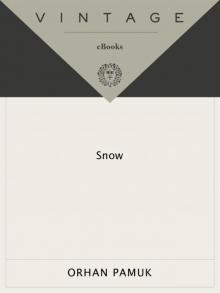 Snow
Snow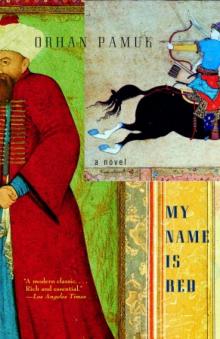 My Name is Red
My Name is Red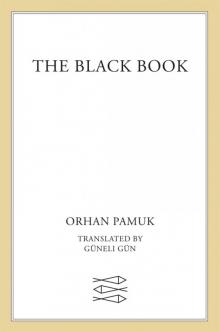 The Black Book
The Black Book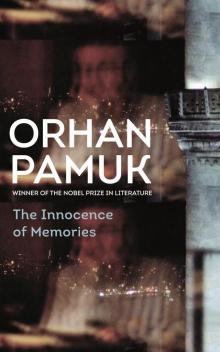 The Innocence of Memories
The Innocence of Memories The White Castle
The White Castle Other Colors
Other Colors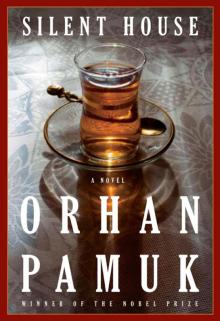 Silent House
Silent House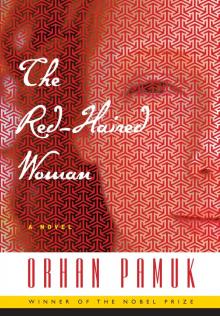 The Red-Haired Woman
The Red-Haired Woman The Museum of Innocence
The Museum of Innocence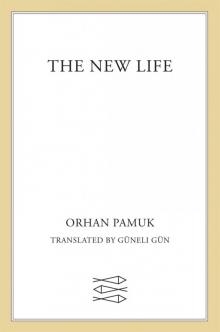 The New Life
The New Life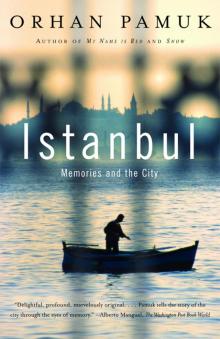 Istanbul
Istanbul